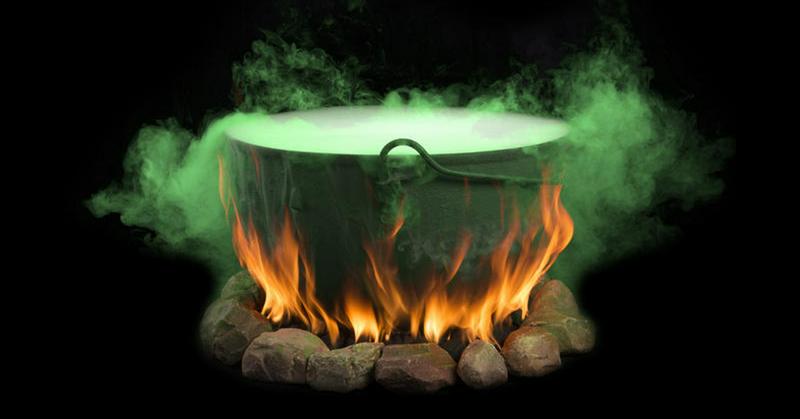Wild Facts About Witches
By | October 17, 2022

The iconic image of a witch look may seem like an easy Halloween costume, but have you ever wondered just where the pointy hats, green skin, and flying brooms came from? Most elements of what we think of as a witch have very little to do with the actual religion of Wicca, yet their symbols are still deeply rooted in history.
Pointy Hats
Nothing says "witch" quite like a pointy black hat with a large brim, but its actual connection to witchcraft is tenuous. Many historians suspect it may be related to the Judenhat, a hat Jews were forced to wear during the 13th century to identify themselves, but it had largely fallen out of use by the time the pointy witch began showing up in paintings. More likely, it is a riff on the Quaker hat, which you may be familiar with if you've ever bought a box of oatmeal. During the 1600s, the Quaker belief that women were equal to men in the eyes of God rubbed a lot of people the wrong way, so the hat became mocked and associated with immoral women. Indeed, images of witches wearing a pointy hat did begin popping up in paintings and wood carvings over the course of the century.

Flying Broomsticks
Witchcraft was often associated with herbalists, who used local plants to make medicines for various diseases of the time but also sometimes to party. Eating hallucinogenic plants often resulted in a pretty bad stomach ache, however, so instead, they were often turned into ointments that were rubbed into the groin or armpit. Without getting too graphic, let's just say that people began to suspect broom handles were being used to apply the ointment to certain orifices. The truth of this is hard to determine, as accusations of witchcraft were often intrinsically tied to the literal demonization of sexuality, and the first person to ever admit to the practice, a Parisian priest named Guillaume Edelin, only did so under torture and years after the first depictions of witches flying through the air with brooms between their legs were available the public.
Bubbling Cauldrons
Cauldrons, like brooms, began as common domestic items, used to cook food over an open flame for centuries. This symbol actually does have ties to the religion of Wicca, which is rooted in ancient Celtic and Welsh mythologies and used the cauldron as a symbol of rebirth, likening it to the womb, while also using it as a practical tool for burning objects or a crucible for crushing herbs. Wiccans today still use the object in rituals and as a symbol of their faith.

Green Skin
Perhaps one of the most ghoulish features of the witch is her trademark green skin, casting her outside the realm of humans and into the world of monsters. However, this addition to the witchy look is by far the newest, emerging less than century ago with MGM's 1939 masterpiece The Wizard Of Oz. Excited to wow the world with the recent invention of Technicolor, the filmmakers changed a few details from the books, namely giving Dorothy ruby slippers instead of silver and making the Wicked Witch of the West's skin green. It certainly gave the film a more colorful palette, but unfortunately for the Wicked Witch actress, Margaret Hamilton, the copper-based make up was extremely toxic. It didn't kill her—though it came close when pyrotechnic effects proved it to be highly flammable as well—but it did make eating and drinking a pain in the broom.

